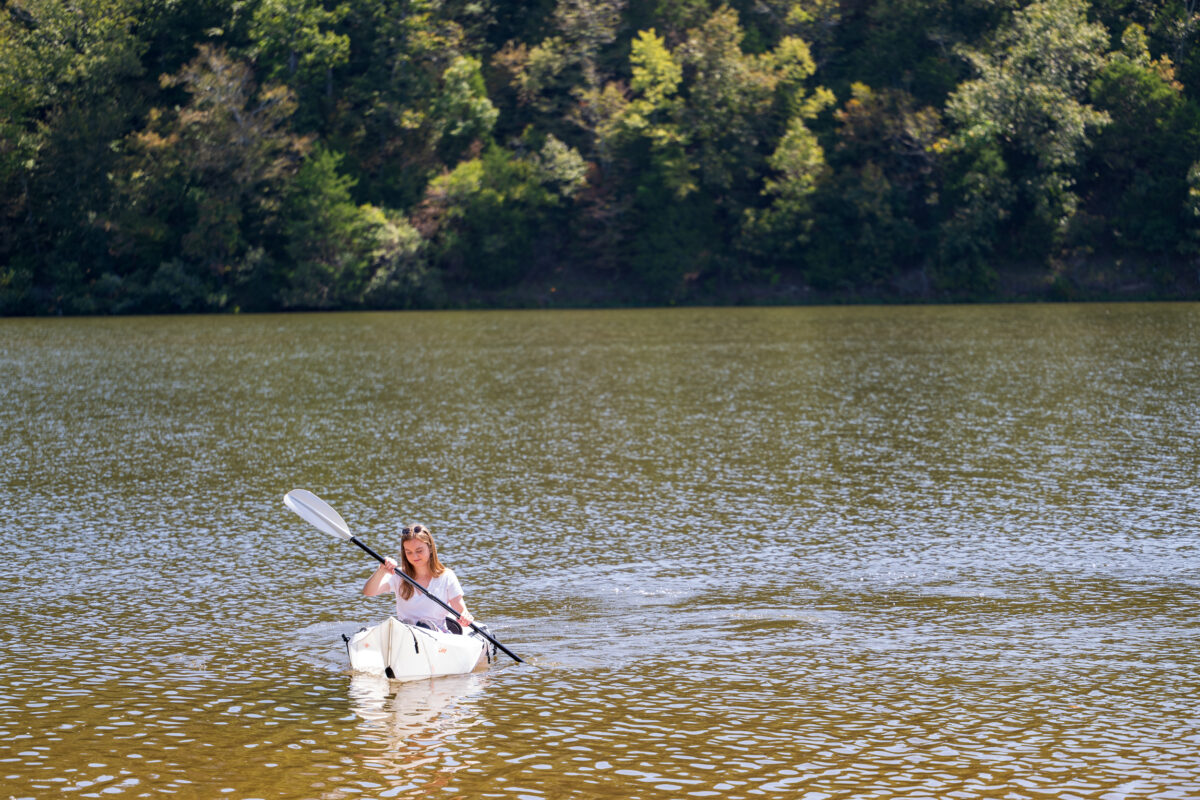Black Warrior River. East Lake Park. Cahaba River. How The Nature Conservancy in Alabama is protecting Birmingham waterways
Reading time: 6 minutes
Sponsored

Do you love Alabama lakes? Did you know they are actually rivers? Alabama is connected by a vast network of rivers and streams that are a life-giving force, sustaining human and ecological communities here in Birmingham and across the state. Find out what The Nature Conservancy in Alabama is doing to protect our most precious natural resource.
The Nature Conservancy (TNC) is on the front lines of protecting these waterways and is committed to seeing the restoration of some of Alabama’s most important–and most beautiful–places.
Protecting Alabama’s Rivers: How It’s Done

Protecting rivers like the Cahaba and Locust Fork starts with data collection and analysis to create a working map of restoration priorities. These projects include:
- stabilizing eroding streambanks,
- increasing instream habitat, and
- restoring riparian buffers (buffers of vegetation near a stream) on public and private lands.
In Alabama, TNC’s freshwater work began right in our backyard on the Cahaba River. The river is widely known as a special place for both critters and people. The river has many rare species, including ten fish and mussels that are federally endangered.
Our rivers and the species in them face many threats, but the most serious are increased sedimentation and aquatic barriers, like low-head dams on the Cahaba. These dams can prevent aquatic species from passing, thus limiting their range and leading to isolation.
TNC and the Cahaba River: Past and Present
In 2004, many partners came together to work with TNC to remove the Marble Slab (a dam). This project marked a significant shift in TNC’s work, from inventory and assessment to active restoration on the Cahaba.

Today, TNC focuses on reducing sediment entering the Cahaba. Chasing down sediment sources is tough work, so TNC is using the Bank Erosion Hazard Index (BEHI) system to map sediment sources and develop restoration plans to fix “bad spots” on the river. An example of a bad spot is an actively eroding river bank.
The Locust Fork of the Black Warrior River
The Locust Fork of the Black Warrior River stretches more than 150 miles through three Alabama counties near Birmingham. Growing up in the Strawberry Community of Arab, Alana Reynolds remembers playing barefoot in the creek behind her house and fishing with her dad. Reynolds is now the watershed coordinator for Locust Fork. Her job is to protect local watersheds by working with landowners to improve water quality, reduce sediment runoff into the water, and conserve the incredible freshwater biodiversity in our area.

“Many people don’t realize how special the Locust Fork River is. It is literally an ecological treasure that needs to be protected. We want to bring attention to that. We have a lot of work to do, but with support from the local community and partners, the future of the Locust Fork is bright.”
Alana Reynolds
Ultimately, the goal is to continue to build the Locust Fork into a river that is a public asset. By promoting public access and recreational use of the Locust Fork and other rivers, The Nature Conservancy hopes to build a culture where the conservation and protection of our rivers is at the forefront of public and private actions.
Urban Conservation Here at Home

In the Greater Birmingham area, The Nature Conservancy’s Urban Conservation program seeks to protect the waters that flow through our community. Led by urban conservation manager Francesca Gross, The Nature Conservancy’s “North American Cities” network is engaging with communities and partners to focus on stormwater management and improve the headwaters of the Black Warrior and Cahaba Rivers.
Why is stormwater management important? Stormwater often contains debris, pollutants and chemicals–things we don’t want flowing into our rivers. Stormwater management best practices capture this water through ponds, bioswales and tree wells before they reach the river.

Conservation at East Lake Park
Over the past year, The Nature Conservancy and its partners conducted a tree canopy assessment in historic East Lake Park–the largest park in Birmingham. A tree canopy assessment helps to maintain a healthy urban forest, and the initiative is part of a larger plan for East Lake Park that includes planting native trees and reviving the Village Creek corridor by removing invasive plants and trash.
This work is a true community partnership, bringing together the City of Birmingham, Ruffner Mountain, Cawaco RC&D Council, and the South East Lake Neighborhood Association with funding from The National Fish and Wildlife Foundation 5 Star Grant program.
“Working in the urban creeks—Village, Valley and Shades Creek—in the Birmingham area is a challenge and a pleasure. Neighborhoods truly love their parks and outdoor spaces. Working together, we are improving the future urban forests and streams.”
Francesca Gross
Greenprint for Birmingham

The Conservancy is also working to create a Greenprint Birmingham. A Greenprint is a conservation assessment for the city that integrates biodiversity and ecosystem services into city and regional planning. It allows decision-makers to better prioritize urban projects.
Greenprint Birmingham will identify opportunities for increased tree canopy and off-site stormwater retention. The findings will guide The Nature Conservancy in its Urban Conservation work.
Learn more
This article is sponsored by Vulcan Materials Company, a proud partner of The Nature Conservancy. Learn more about the Conservancy’s work and how to get involved by visiting their website.
Sponsored by:



